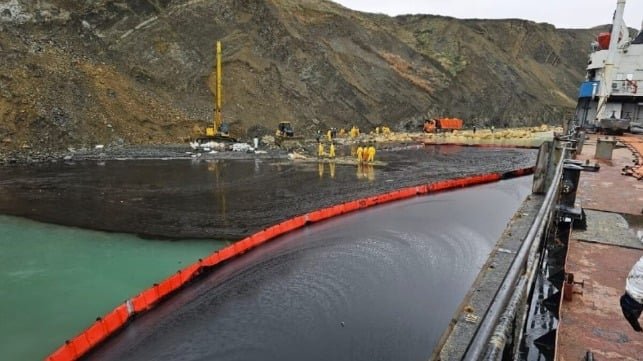The Aftermath of the Kerch Strait Oil Spill: Ukraine Claims Russian Authorities Drafting Students for Cleanup Effort
The Ukrainian government is accusing Russian authorities of drafting students in occupied areas to join the cleanup effort in the Kerch Strait. This comes after a double tanker casualty in December resulted in bunker fuel continuing to wash ashore in the area.
In December, the aging river-sea tanker Volgoneft-212 sank in a severe storm just outside the Kerch Strait. Its sister ship, Volgoneft-239, went aground on a rocky shore off Taman shortly after, leaking an estimated 3,700 tonnes of mazut, a heavy fuel oil grade that solidifies at room temperature, into the marine environment.
Recruitment of Ukrainian Students for Cleanup
According to Ukraine’s Center for National Resistance, Ukrainian students from occupied areas were initially recruited and sent to Krasnodar and Crimea to assist with the cleanup operation. However, these students were not provided with protective equipment for their cleanup duties. A new group is now being recruited for “volunteer” work in Kherson.
Local residents have expressed frustration over the delayed official response to the spill. Last week, Russia declared a state of emergency and established a unified command to oversee the interagency response to the spill. The cleanup efforts are ongoing as the spill continues to spread, with the local effects on Crimea expected to be severe.
Salvage and Cleanup Operations
The wreck of Volgoneft-239 remains above water near Taman and accessible to salvors. Responders have built an embankment around the stern of the tanker to contain the cargo and gain access for cleanup operations. They are working to pump off all remaining cargo by the end of January.
About two kilometers of boom have been deployed around the wreck site to contain the ongoing spill. Responders have also removed approximately 1,200 tonnes of oily water from the stern section of the vessel.
Environmental Impact and Cleanup Efforts
Local authorities estimate that nearly 6,000 seabirds have been exposed to oil so far. A large-scale volunteer effort is underway to rescue and clean these affected birds. The impact on local dolphin species and commercial fisheries is expected to last for months, with the overall effects of the spill potentially lingering for a decade or more.
Ukraine’s ministry of ecology has calculated the damage from the spill to be around $14 billion, taking into account the impact on the marine environment and Russian-held territories on the shoreline.

